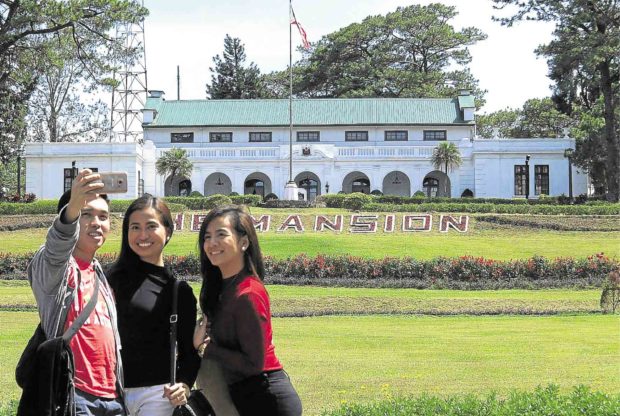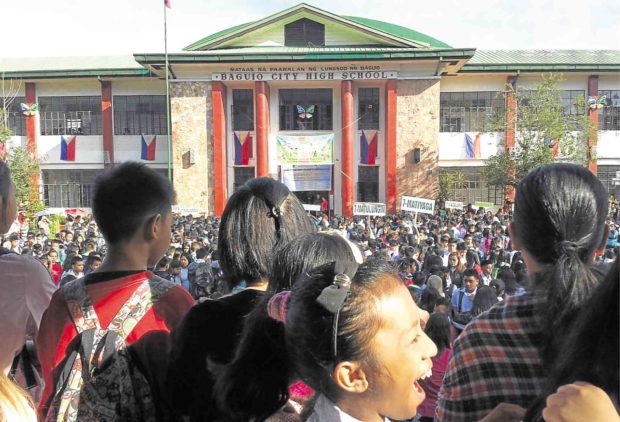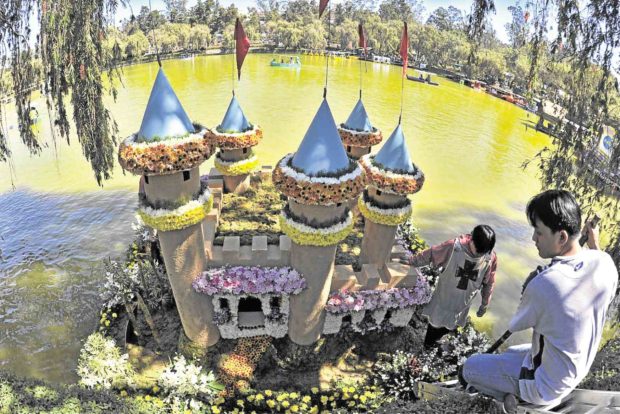Baguio landmarks on e-map
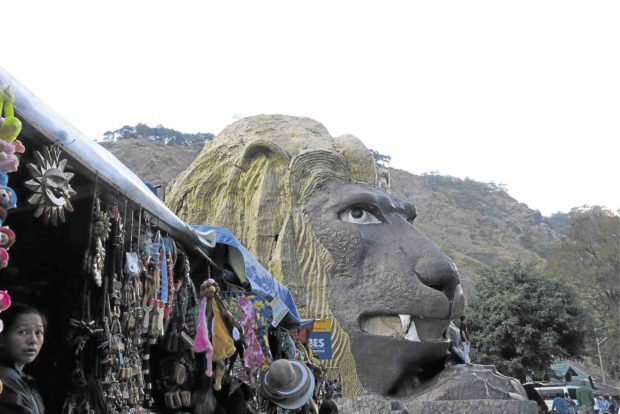
The iconic Lion’s Head along scenic Kennon Road welcomes visitors to Baguio City, the country’s summer capital. —Photos By EV Espiritu
BAGUIO CITY — People may not be aware of a city marker on Governor Pack Road, where, during the American colonial period, the first sessions of the Second Philippine Commission led by Governor General Luke Wright were held from April 22 to June 11, 1904.
The commission, also known as the Taft Commission headed by William Howard Taft, issued the laws that shaped the Philippine government under US tutelage.
Stripped of its historical value after decades of apparent state neglect, that concrete marker is now part of a wall in a Korean restaurant, according to scholars and members of heritage conservation groups.
The groups have recently completed a comprehensive report on the city’s heritage sites and structures, hoping to convince the city government to preserve these “tangible and intangible treasures.” Their report aimed to advance “the protection and wise use of Baguio City’s cultural and historical wealth.”
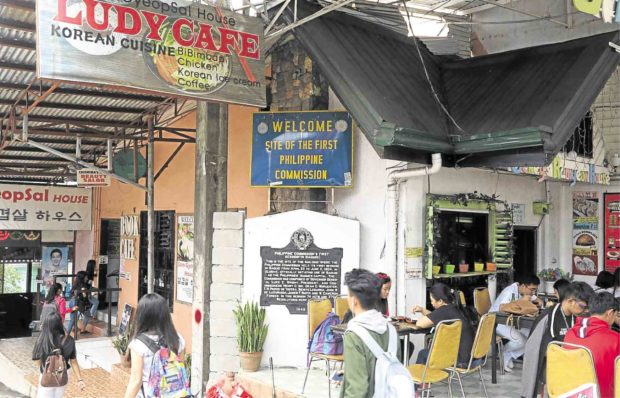
The First Philippine Commission marker is ignored by patrons of a restaurant on Governor Pack Road.
They have uploaded online for people interested in history a user-friendly electronic map showing 73 proposed heritage landmarks in Baguio, including old schools, houses and roads, complete with their historic and cultural profiles.
Article continues after this advertisementAlong with the Governor Pack marker, the experts examined traffic-plagued Session Road, the old Baguio post office, which has been surrounded by food stalls and City Hall, which was modernized despite objections from heritage activists.
Article continues after this advertisement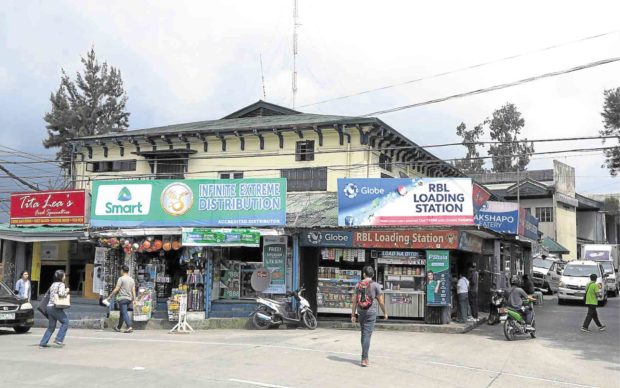
Food stalls and variety stores surround the Old Baguio Post Office.
Urban development
“Considering the direction and pace of over — if not confused — urban development in Baguio with its rich heritage for protection, the engagement of numerous stakeholders has to be built up,” the report said.
“The state of heritage awareness, appreciation, conservation actions and utilization has to be improved in view of growing challenges in [Baguio’s] urban management,” it said. It listed heritage structures proposed for mapping and marker installation.
The groups said that the heritage “assets” could be protected and conserved “only if we understand not only their functional use, but even their value beyond utility, as well as their meaning and significance that we wish to sustain.”
For example, the Baguio Cathedral is listed as a historical structure built on top of what Belgian missionaries in 1907 called “Mount Mary.”
“The church area was originally referred to as ‘kampaw’ by Ibaloys in the early 1900s as a ‘place for social gathering,’” the report said.
Pines Theater
What used to be Pines Theater on Session Road is described as the former residence of the Binay-an family. The theater was built in 1938 and was “given such name when Session Road was still full of pine trees.”
Some of the heritage sites are under the custody of national agencies.
The old post office, the report said, “can negotiate and sign a memorandum of agreement with Philippine Postal Corp. to transfer the management of the post office to Baguio for a minimum period of 25 years.”
Heritage consultants said the building could be “converted into a Baguio City visitors’ center and museum.”
City ordinances can also be passed to declare the Baguio Cathedral, post office, Burnham Park, Teachers’ Camp, Camp John Hay, Baguio Country Club, botanical garden, the presidential Mansion and Wright Park as heritage zones.
The heritage advocates encouraged the private sector to do its part in preserving Baguio’s legacy.
To protect the Philippine Commission marker, the report urged the city government to advise the restaurant about “the historical value of the place and if possible, help the city to take care of the marker.”
“The trail that Ibaloys referred to as Shenos became a usual promenade area that members of the Second Philippine Commission walked through from their meetings,” it said.
That is now Session Road, the busiest street in the city.
Baguio historical structures and sites
- Baguio City Hall
- Malcolm Square
- Old stone market
- Baden Powell building site
- Cabinet Hill and Government Center
- Casa Vallejo
- Court of Appeals compound
- Supreme Court compound
- Old Baguio Post Office
- Baguio Cathedral
- Casiciaco Recoletos Seminary building
- Church of the Resurrection
- Convent of the Most Blessed Sacrament (Pink Sisters’ Convent)
- Home Sweet Home
- Little Flower Novitiate
- St. Francis Convent
- United Church of Christ in the Philippines
- Baguio Central School
- Baguio City National High School
- Baguio Military Institute
- Baguio Patriotic High School
- Brent International School
- Easter School
- Japanese School
- Lucban Elementary School
- Maryknoll or Marishan School, now Maryknoll Ecological Sanctuary
- Philippine Military Academy

Philippine Military Academy
- Quezon Elementary School
- St. Louis Schools and University
- University of Baguio
- University of the Cordilleras
- University of the Philippines Baguio
- Ating Tahanan
- Baguio General Hospital and Medical Center
- Baguio Stock Farm, now Baguio Dairy Farm
- Camp Henry T. Allen, formerly Constabulary Hill
- Dominican Hill Retreat House
- Governor Whitmarsh Residence that became home to Cafe by the Ruins
- Loakan Airport
- Mirador Hills and Mirador Observatory
- Teachers’ Camp
- Ambassador’s Residence inside Camp John Hay
- Mansion House
- Baguio Country Club
- Burnham Park
- Camp John Hay
- Voice of America compound
- Bell Amphitheater
- Igorot Garden
- Forbes Park
- Wright Park
- American World War II Cemetery
- Second Fil-Am Veterans Cemetery
- Arevalo Building
- Laperal Building
- Laperal White House
- Liberation Marker along Kennon Road (missing)
- Liberation Marker along Marcos Highway
- Liberation Marker along Naguilian Road
- Mines View Park
- MS Building
- Muller Mansion, now Heritage Mansion
- Peredo’s Lodging House
- Philippine National Bank
- Pines Theater
- Plaza Theater
- Session Theater
- Harrison Road
- Kennon Road
- Leonard Wood Road
- Naguilian Road
- Pacdal Circle
- Session Road
